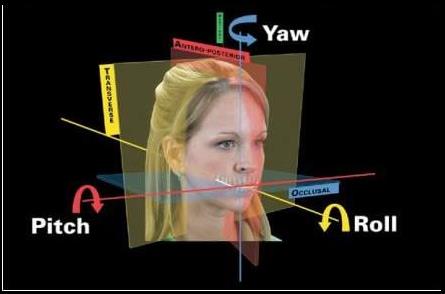
In order to improve the misalignment of the upper jaw!!
2월 1, 2023
Changes of pharyngeal airway size and hyoid bone position following orthodontic treatment of Class I bimaxillary protrusion.
2월 1, 2023CLINICAL ASPECTS OF THE CRI (Cranial Rhythm Impulse) and mcbsplint
CLINICAL ASPECTS OF THE CRI (Cranial Rhythm Impulse) and mcbsplint
The rate of the CRI decreases in a variety of conditions, for example, psychological disturbances, 11 traumatic brain injuries,31and in neonates after a difficult birth.32 Low CRI rates have also been reported in patients who are comatose14 and in children with developmental delays .14, 3 3 Anecdotal reports suggest that the CRI also decreases in other circumstances, for example, emotional exhaustion, malnutrition, metastasis,14 and many other maladies. The CRI rate is increased in patients who have acutefever12 and in hyperkinetic and autistic children.14
The CRI amplitude must also be assessed; this quality is more difficult to appraise than the rate. Low CRI amplitude has been variously described as a palpable sensation of low volume12and as a labored, low-energy, or lethargic effort.14 Excess amplitude has been characterized as “the profound repercussion of a wave striking a rock-bound coast”12 and as a wave “in a rigid container fighting against its boundaries.”14
CRI fluctuations should be bilaterally symmetrical,1 2, 14 even though many body rhythms are lateralized, with the left and right sides oscillating in different phases.3 4 Nonsymmetrical CRI findings are interpreted as signs of restrictions in the articulations in the cranial sutures or as membranous tension within the intracranial falx cerebri, falx cerebelli, and paired tentoria.1 2 , 14 Besides its use in the diagnosis, the CRI also provides a fulcrum for a treat in restrictions in cranial bones and fascial membranes. Treatment is accomplished by following sensed CRI motion with the hands (in any direction on — broadening, narrowing, flexion, extension, torsion, and so forth) and then either exaggerating the motion or resisting it.3 5 This treatment seems to balance the movement and make the motion symmetrical.
The mcb splint affects the rate, amplitude, and bilateral symmetrical fluctuation of CRI and the rhythm of the whole body moves in a balanced way.
So, as soon as you wear the mcb splint, all the twisted bones begin to level, and all the muscles that have fallen down are lifted up, making your body less tiring and stronger. If orthodontic treatment is performed at the position of the lower jaw at the mcb position, it will get better every time the teeth touch for the rest of your life.
The way humans live healthily is through the bones of the skull to improve movement. Isn't this the Bulloch(herb of eternal youth) that King Jinshi(Qin Shi Huang) looking for?
*Walter C, Lechner KH, Karl M. A pilot study on spatial changes in the maxilla caused by osteopathic therapy. Quintessence Int. 2015 Jan; 46(1):81-6. PS
A variety of theories on the pathogenesis of temporomandibular disorders (TMD) exists resulting in treatment approaches ranging from the fabrication of occlusal splints to alternative treatment modalities such as osteopathy. The goal of this pilot study was to investigate whether osteopathic treatment causes spatial changes in the maxilla.
Following ethics commission approval and informed patient consent, three patients diagnosed with TMD participated in this investigation. In addition to regular treatment, an individualized mandibular occlusal splint was fabricated and a maxillary silicone impression was made.
Following osteopathic treatment, the splint was adapted intraorally and another maxillary impression was made. Before and after treatment, the splint and the impressions were scanned three-dimensionally. The resulting images were superimposed using best-fit matching algorithms.
Inconsistent spatial changes in the posterior areas were observed both in the maxillary impressions as well as in the mandibular splints reaching maximum absolute values of 0.50mm.
Based on this pilot study, it appears that osteopathic treatment may be capable of inducing spatial changes in the maxilla due to sutural movement thereby validating the fundamental principles of osteopathic treatment.
Although based on the study conducted, it cannot be concluded that osteopathy constitutes a successful treatment alternative in TMD patients, practitioners should be aware of this treatment modality.
